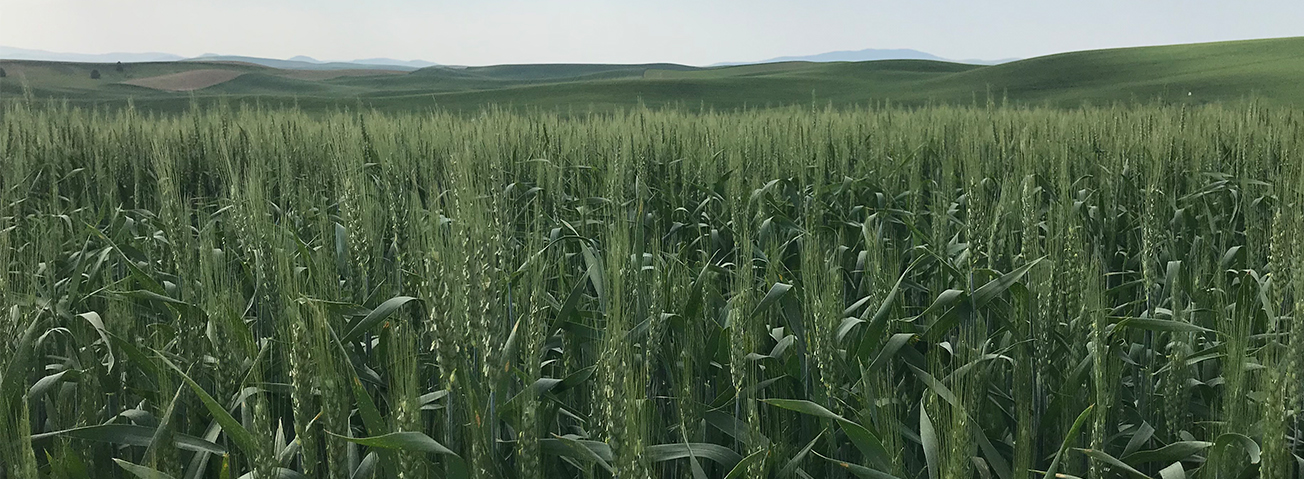
Grass Cover Crops, Such as Rye and Winter Wheat, Are the Most Common Cover Crops Used Before Planting Corn, Soybeans, and Cotton
- by Maria Bowman and Steven Wallander
- 7/6/2021
Cover crops—which are typically added to a crop rotation in between two commodity or forage crops—provide living, seasonal soil cover with a variety of on-farm benefits, such as increased soil moisture capacity, improved nutrient cycling, and weed suppression. Cover crops can also provide public benefits by reducing sediment loss, nutrient runoff, and leaching; reducing flooding; and storing carbon in the soil.
When choosing a cover crop, a farmer might consider a variety of factors, including the cost of the seed, the intended use (e.g., cover only, grazed, or harvested for forage), how the cover crop fits into the cash crop rotation and anticipated planting and harvest dates, and long-term management goals (e.g., to prevent soil erosion or to improve soil organic matter). Soil and climate, as well as the availability of financial assistance, are also important factors. In 2017, approximately one-third of U.S. acres that planted cover crops received a financial incentive payment from either a USDA working lands conservation program or a similar State program.
A recent report from USDA, Economic Research Service (ERS) examined cover crop management using data from the Agricultural Resource Management Survey (ARMS), a national survey of farming operations and production practices jointly conducted by two USDA agencies: ERS and the National Agricultural Statistics Service (NASS). This report provides nationally representative estimates of which cover crops are being grown within the major commodity crop rotations by using field-level data collected for corn (2016), cotton (2015), and soybeans (2018).
For corn fields intended for use as grain or silage in 2016, more than 90 percent of acres with cover crops used a grass or small grain cover crop, such as rye, winter wheat, or oats. ARMS did not ask farmers to report cereal rye and annual ryegrass separately, so the total rye cover crop data included both. Rye was more than twice as common as winter wheat as the cover crop used on corn fields.
Rye and winter wheat were also the most common cover crops on soybean fields in 2018. The field-level soybean survey in 2018 added an option for farmers to report the use of a cover crop mix (at least two cover crop species). ERS researchers found that just under a quarter of the cover crops used on soybean acres were a cover crop mix of some kind.
By comparison, winter wheat was the most common cover crop used on cotton fields in 2015. This likely reflects both the role of wheat stubble in protecting cotton seedlings from wind and the potentially negative impact of certain chemicals produced by cereal rye on the growing cotton plant.
This article is drawn from:
- Wallander, S., Smith, D., Bowman, M. & Claassen, R. (2021). Cover Crop Trends, Programs, and Practices in the United States. U.S. Department of Agriculture, Economic Research Service. EIB-222.
You may also like:
- Wallander, S. (2021, March 1). Persistent Cover Crop Adoption Varies by Primary Commodity Crop. Amber Waves, U.S. Department of Agriculture, Economic Research Service.
- Bowman, M., Wallander, S. & Lynch, L. (2016, September 6). An Economic Perspective on Soil Health. Amber Waves, U.S. Department of Agriculture, Economic Research Service.
- Environmental Quality. (n.d.). U.S. Department of Agriculture, Economic Research Service.
- Wallander, S. & Maguire, K.B. (2020, April 6). Partially Completed Conservation Contracts Reveal On-Farm Practice Incentives . Amber Waves, U.S. Department of Agriculture, Economic Research Service.
- Hellerstein, D., Vilorio, D., Ribaudo, M., Aillery, M., Bigelow, D., Bowman, M., Burns, C., Claassen, R., Crane-Droesch, A., Fooks, J., Greene, C., Hansen, L., Heisey, P., Hitaj, C., Hoppe, R.A., Key, N., Lynch, L., Malcolm, S., McBride, W.D., Mosheim, R., Nehring, R., Schaible, G., Schimmelpfennig, D., Smith, D., Sneeringer, S., Wade, T., Wallander, S., Wang, S.L. & Wechsler, S.J. (2019). Agricultural Resources and Environmental Indicators, 2019. U.S. Department of Agriculture, Economic Research Service. EIB-208.


